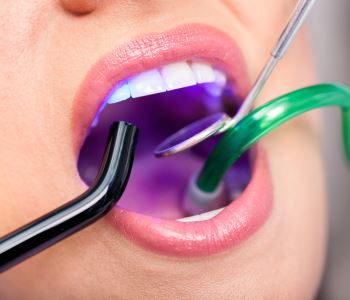LASER stands for “light amplification by the stimulated emission of radiation.” The laser instruments used by dentists create a narrow and focused beam of light designed to react to specific tissue. Each laser instrument produces different wavelengths in order to target specific tissue. For example, soft tissue lasers target gum and soft tissue, such as the gums, while hard tissue lasers target hard tissue, such as teeth and bone.
When you come in for a laser dental treatment, you will find your appointment begins in a similar fashion to traditional dental treatments. You may receive anesthesia or a sedative, though at a much lower amount than required for traditional treatment. You will not experience the vibrations and discomfort you experience with traditional dental drills and, in most cases, you will experience little to no pain or discomfort. Laser treatments are often much quicker and more economical than traditional dental procedures and offer other additional benefits.

